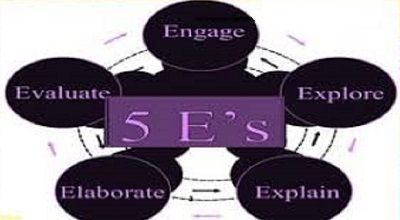Engagement phase of a science lesson
Options for the engagement phase of a science lesson refer to various strategies, activities, and approaches that teachers can use to capture students’ interest, stimulate curiosity, and create a positive learning environment at the beginning of a science lesson. The engagement phase is crucial as it sets the stage for active participation, establishes relevance to students’ lives, and motivates them to learn more about scientific concepts.
Engagement Phase in Science Lessons
Purpose of the Engagement Phase
- Definition and importance
- Establishing relevance to real-world applications
Strategies for Engaging Students in Science
1. Demonstrations and Experiments
- Purpose: Illustrating scientific principles
- Examples: Classic experiments like the double slit experiment in physics, chemical reactions in chemistry, etc.
- Techniques: Hands-on demonstrations vs. simulations
2. Interactive Media and Technology
- Purpose: Enhancing understanding through multimedia
- Examples: Virtual labs, interactive simulations, educational apps
- Implementation: Integrating technology into the classroom
3. Problem-Based Learning
- Purpose: Encouraging critical thinking and problem-solving skills
- Examples: Real-life scenarios, case studies
- Approach: Structuring tasks and questions effectively
4. Questioning Techniques
- Purpose: Stimulating curiosity and inquiry
- Examples: Socratic questioning, open-ended questions
- Strategies: Probing for understanding, encouraging discussion
5. Visual Aids and Infographics
- Purpose: Enhancing comprehension of complex concepts
- Examples: Diagrams, charts, and graphs
- Design Principles: Effective use of visuals in education
Best Practices for Implementing Engagement Strategies
1. Alignment with Learning Objectives
- Purpose: Ensuring relevance to curriculum goals
- Integration: Connecting engagement activities to broader learning outcomes
2. Differentiated Instruction
- Purpose: Addressing diverse learning needs
- Strategies: Tailoring engagement techniques to varied student abilities and interests
3. Classroom Environment and Management
- Purpose: Fostering a supportive learning atmosphere
- Considerations: Physical setup, student collaboration, teacher facilitation
4. Assessment and Feedback
- Purpose: Gauging student understanding
- Methods: Formative assessment during the engagement phase
- Feedback Mechanisms: Providing constructive feedback to guide learning
5. Reflection and Adaptation
- Purpose: Continuous improvement of engagement strategies
- Evaluation: Reflecting on effectiveness through student feedback and outcomes
- Adaptation: Adjusting approaches based on assessment data and observations
Case Studies and Examples of Successful Engagement Techniques
1. Case Study 1: Using Demonstrations in Middle School Science
- Context: Classroom setting and student demographics
- Techniques: Specific experiments conducted
- Impact: Student engagement and learning outcomes
2. Case Study 2: Integrating Technology in High School Physics
- Context: Technology tools used and rationale
- Examples: Virtual simulations, online resources
- Evaluation: Effectiveness in enhancing understanding and interest
Challenges and Solutions in Implementing Engagement Strategies
1. Barriers to Engagement
- Examples: Lack of resources, time constraints
- Addressing Challenges: Creative solutions and workarounds
2. Professional Development and Support
- Purpose: Educator training in effective engagement techniques
- Strategies: Workshops, peer collaboration, online resources
- Conclusion: Enhancing the Engagement Phase for Effective Science Education
Summary of Key Points
- importance of engagement in science lessons
- Strategies for effective implementation
- Continuous improvement through reflection and adaptation
Future Directions
- Emerging trends in science education and engagement strategies
- Potential areas for further research and innovation
This outline provides a comprehensive framework for developing a 2000-word document on the engagement phase of science lessons, covering strategies, best practices, case studies, challenges, and future directions. Each section can be expanded with detailed explanations, examples, and references to enrich the content further.
FAQs
1. What is the purpose of the engagement phase in a science lesson?
Answer: The engagement phase serves to capture students’ interest, stimulate curiosity, and establish relevance to real-world applications of scientific concepts. It sets the stage for active participation and prepares students for deeper exploration and learning.
2. How can demonstrations and experiments be effectively used to engage students in science?
Answer: Demonstrations and experiments are powerful tools to engage students by providing visual and hands-on experiences that illustrate scientific principles. By carefully selecting and conducting experiments that align with learning objectives and students’ interests, teachers can foster curiosity and facilitate understanding through direct observation and interaction.
3. What role does technology play in the engagement phase of a science lesson?
Answer: Technology enhances engagement in science lessons by offering interactive simulations, virtual labs, and multimedia resources that make abstract concepts more tangible and accessible. Integrating technology allows students to explore phenomena in ways that are otherwise difficult or impossible in a traditional classroom setting, thereby promoting active learning and deeper understanding.
4. How can questioning techniques be used to promote engagement in science?
Answer: Questioning techniques such as Socratic questioning and open-ended inquiries can stimulate critical thinking and encourage active participation in science lessons. By posing thought-provoking questions that prompt students to analyze, hypothesize, and explain their reasoning, teachers can foster a culture of inquiry and exploration that deepens understanding and engagement.
5. Why is it important to use visual aids and infographics during the engagement phase of a science lesson?
Answer: Visual aids and infographics help to simplify complex scientific concepts, making them more comprehensible and memorable for students. By presenting information visually through diagrams, charts, and graphs, teachers can facilitate understanding, promote retention, and enhance engagement by appealing to different learning styles and preferences.
6. How can problem-based learning be effectively integrated into the engagement phase of a science lesson?
Answer: Problem-based learning engages students by presenting real-world challenges or scenarios that require them to apply scientific knowledge and skills to solve problems. By structuring tasks that are relevant and meaningful to students’ lives, teachers can promote critical thinking, collaboration, and motivation to learn as students work towards practical solutions and a deeper understanding of scientific principles.
7. What are some practical tips for managing the engagement phase of a science lesson effectively?
Ans: Managing the engagement phase effectively involves creating a supportive learning environment, maintaining students’ interest throughout the lesson, and facilitating active participation. Teachers can achieve this by varying instructional strategies, incorporating student interests, providing clear expectations, and offering timely feedback to keep students engaged and motivated to learn.
